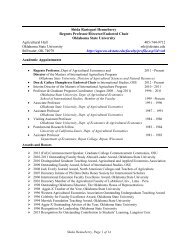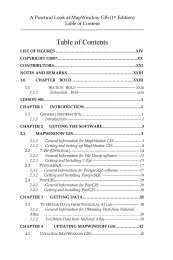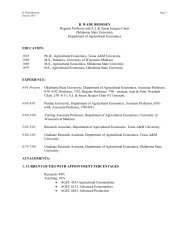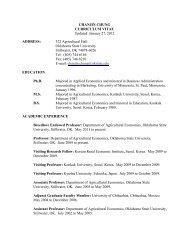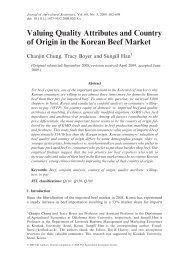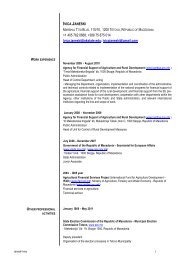Aggregate versus Disaggregate Data in Measuring School Quality
Aggregate versus Disaggregate Data in Measuring School Quality
Aggregate versus Disaggregate Data in Measuring School Quality
Create successful ePaper yourself
Turn your PDF publications into a flip-book with our unique Google optimized e-Paper software.
However, the school effects <strong>in</strong> (4) are heteroskedastic, while the true school effects are<br />
not. Thus, to correct for heteroskedasticity, we divide the estimator by its standard deviation<br />
obta<strong>in</strong><strong>in</strong>g the standardized estimator of school effect:<br />
( 1<br />
(5) u ( ( ˆ<br />
j =<br />
Y.<br />
j − Xβ<br />
) . j )<br />
2 2<br />
σ + σ / n<br />
u<br />
e<br />
j<br />
Thus, the set of u j<br />
( ’s may also be used to rank schools. Similarly, the multilevel estimator <strong>in</strong> (2)<br />
can also be standardized to obta<strong>in</strong>:<br />
)<br />
2 2<br />
n j<br />
(2.a) u j = ( 1/( σ u + σ e / n j ))( ∑ yˆ<br />
i ij ) / n<br />
= 1 j<br />
1.2. Confidence Intervals for the Estimates of <strong>School</strong> <strong>Quality</strong><br />
A confidence <strong>in</strong>terval for school effects is: uˆ j ± t1<br />
/ 2σ<br />
u|<br />
uˆ<br />
. Thus, it is necessary to obta<strong>in</strong><br />
the conditional variance of the random effect given its estimator; that is, Cov ( u | uˆ<br />
) .<br />
For both, disaggregate and aggregate estimators, the covariance matrix is derived<br />
similarly. First it is necessary to obta<strong>in</strong> the jo<strong>in</strong>t distribution of the vector of school effects u and<br />
its estimator. For this, notice that <strong>in</strong> both cases, the estimator is a l<strong>in</strong>ear comb<strong>in</strong>ation of the vector<br />
of dependent variables, test scores <strong>in</strong> our case. Thus the jo<strong>in</strong>t distribution can be derived from the<br />
jo<strong>in</strong>t of u and Y. Then, us<strong>in</strong>g a theorem from Moser (theorem. 2.2.1, page 29), the conditional<br />
covariance matrix of school effects is obta<strong>in</strong>ed. A derivation of this covariance matrix is given <strong>in</strong><br />
the appendix.<br />
The conditional covariance matrix based on the disaggregate estimator is:<br />
2 4 −1<br />
−1<br />
(6) Cov u | uˆ<br />
) = I −σ<br />
Ζ'<br />
V V − X ( X'V<br />
X )<br />
9<br />
−α<br />
−1<br />
−1<br />
( X')<br />
V Ζ<br />
( σ u u<br />
,<br />
The conditional covariance matrix based on the aggregate estimator is:






